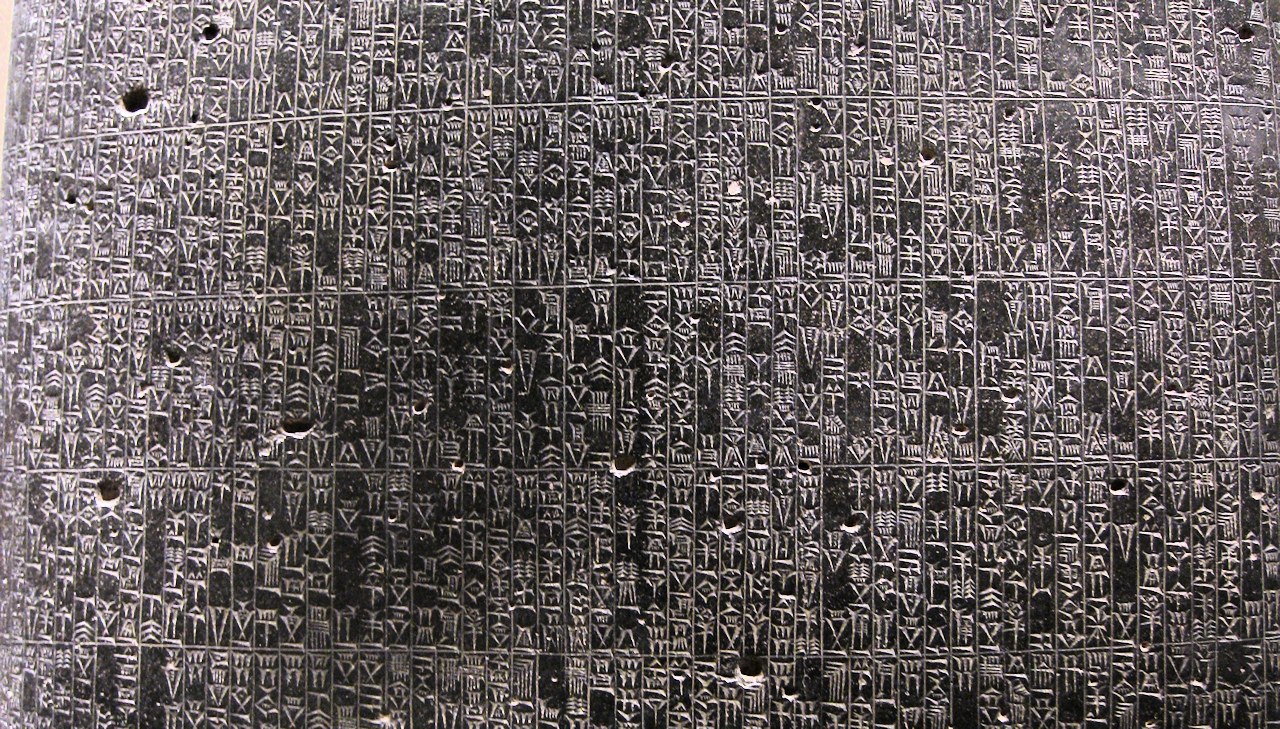Hammurabi was a king of Old Babylonian Empire who reigned from circa 1792 to 1750 BC. Code of Hammurabi is a Babylonian code of law. The laws were inscribed on a stele, a huge boulder over 2 meters tall (7 ft). The stele was made of diorite rock which is quite hard. As a result, we can have an insight into laws of ancient Mesopotamia which are almost 4 thousand years old.
The code was discovered in what is today’s Iran. It is almost complete. Out of 282 numbered laws, only numbers 13 and 66-99 are missing. The stone with Code of Hammurabi was originally standing somewhere in Babylonia, but was looted by invaders from ancient civilization of Elam. There, in modern Iran, it was found by French archeologist Jean-Vincent Scheil. It was transported to France. Currently it is on display in Louvre Museum in Paris.

Eye for an eye, a tooth for a tooth
We best know Code of Hammurabi for some of its laws leaking to popular culture. “An eye for an eye, a tooth for a tooth”. But Babylonian law covered various subjects ranging from liability for flooding neighbor’s fields, to divorce.
Among 282 laws, there are at least four laws pertaining to beer, alcohol and taverns. Their exact translation is as follows:
108
If a tavern-keeper (feminine) does not accept grain according to gross weight in payment of drink, but takes money, and the price of the drink is less than that of the grain, she shall be convicted and thrown into the water.
109
If conspirators meet in the house of a tavern-keeper, and these conspirators are not captured and delivered to the court, the tavern-keeper shall be put to death.
110
If a “sister of a god” open a tavern, or enter a tavern to drink, then shall this woman be burned to death.
111
If an inn-keeper furnish sixty ka of usakani-drink to (…) she shall receive fifty ka of corn at the harvest.

The Babylonian economy was based mainly on barter (exchanging goods for other goods). The first law concerns punishing tavern keepers who cheat customers by serving smaller amount of beer than it would result from the price. The punishment was death by drowning. There are some articles circulating online, claiming that it was punishement for watering down the beer, but the issue of watering down the beer is not directly mentioned in Code of Hammurabi.
Law 109 was created to warrant loyalty of tavern-keepers to the monarchy. Allowing disgruntled citizens to gather in a tavern, and potentially plot against the monarchy, was an act punishable by death.
“Sister of a god” mentioned in law 110 is a priestess. It’s not the drinking itself that is punishable by burning to death. Priestesses were allowed to drink alcohol, but not with commoners. It’s the act of spending time among commoners, that was considered sacrilegious.
Part of the last law is missing, and it is not clear what it means.
Babylonia considered beer an important part of everyday life. In fact, beer was considered a citizen’s right. Production of beer was controlled by the monarchy, and was distributed among citizens according to their social standing. Daily beer ration for priests and administrators was five liters (more than one gallon), and for laborers two liters (about half gallon).



Permalink